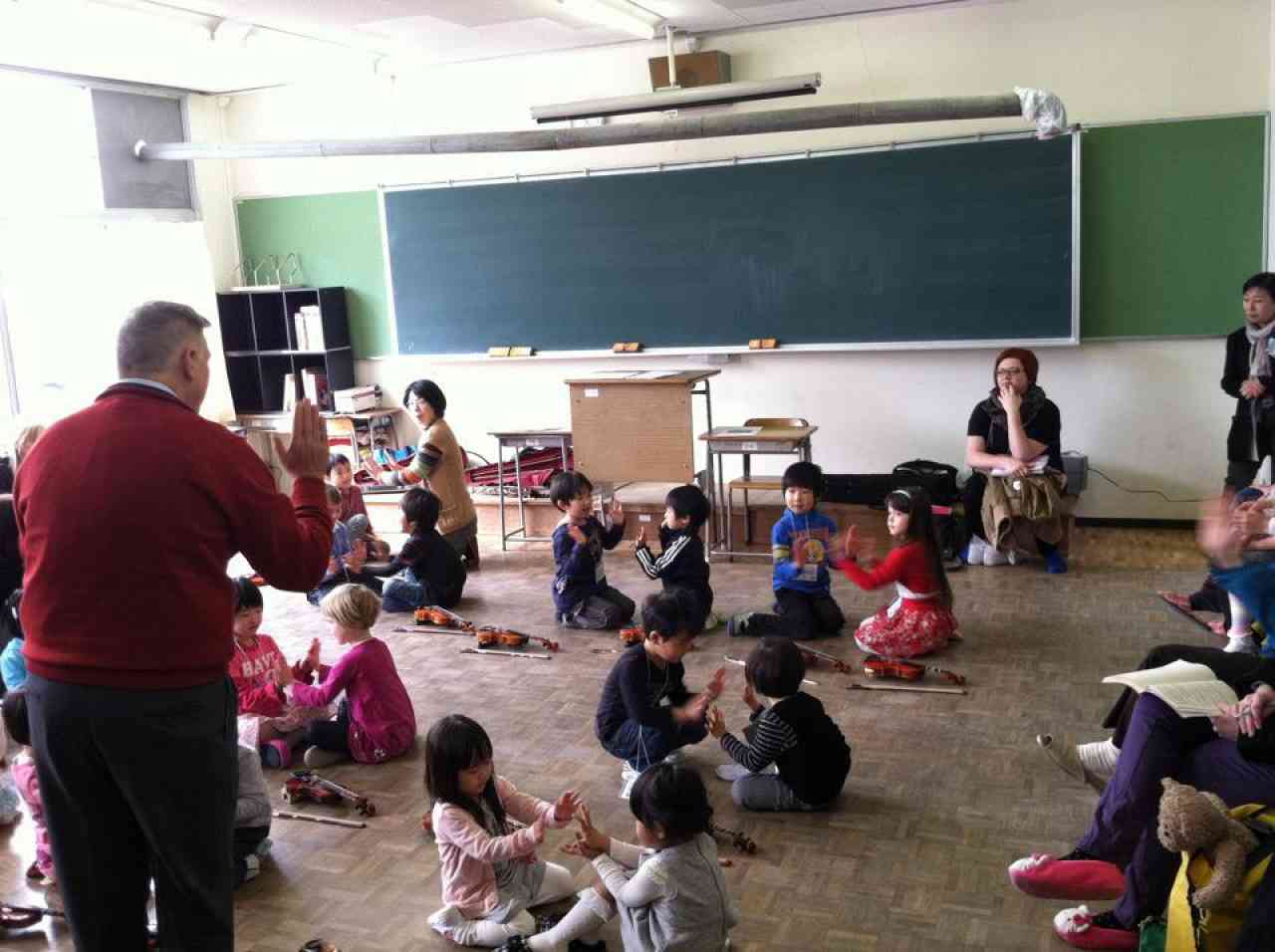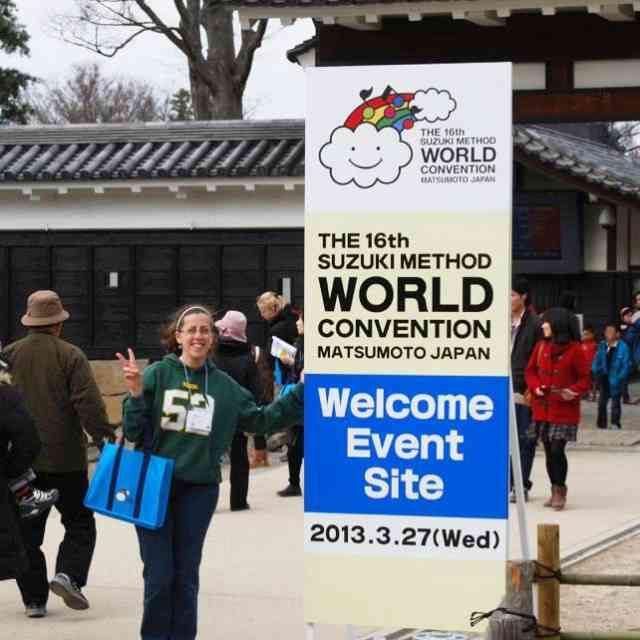See Ed’s previous updates from the Convention, and more from Matusumoto.
March 31—Sunday
Today is the last day of the conference, and we begin with a slightly shortened version of our morning group class. After lunch, we are all assembled in the gymnasium for the final concert. Impressive as all of the performances were, the real genius was the behind the scenes organization of the children. I’m not sure what the total number of performers, but I am guessing that it was between four and five thousand representing every Suzuki instrument as well as voice.
Some of the real highlights: A performance led by Nicholas Kendall of the last movement of the Tchaikovsky Violin Concerto. Stunning, musical, together and in tune! The most glorious representation of Suzuki tone came from a huge string orchestra performing the first movement of the Tchaikovsky Serenade for Strings. The amazing sound filled the arena without the use of any external amplification.
Each instrument area had their time to shine in the concert that lasted just about two-and-a-half hours. Unlike the opening ceremony, there were no speeches, just music and all of it wonderfully performed.

Ed Kreitman teaching in Matsumoto.
Parting thoughts: Participating in the conference was an extraordinary experience on many levels. It was, as it always is at these types of events, wonderful to reconnect with friends and colleagues from around the world. Most significant for me, though was the opportunity to spend time with Doris and Bill Preucil in Matsumoto, whether it was a quick lunch in the cafeteria or a shared cab ride or just a smile outside the conference venue. These were the people who first introduced me to Dr. Suzuki’s work and changed my life forever. I could never have imagined that we would all be together in Matsumoto and I am incredibly grateful to have had this opportunity.
It was also a huge honor and responsibility to be invited to teach at the conference and I am indebted to my Japanese co-teachers, Noriko Kaneko and Motoko Nakamura. I learned so much from observing the Japanese approach to the beginning steps of the Suzuki Method.
I also have to mention what a massive organizational puzzle the conference was and it was figured out and managed brilliantly. Every time I thought I might have a question, there was a sign in English to tell me what I wanted to know, or an actual person to guide me to where I needed to be. So impressive.
But the most significant thing that I am taking away from the conference is that the spirit of Dr. Suzuki is alive and well and flourishing all over the world. His presence was palpable throughout the entire city of Matsumoto. So many wonderful tributes to him by his former students and so many wonderful performances and classes to inspire the next generation of teachers, who were at the conference in record numbers. So exciting to see this, for they will be the ones to carry the method into the future.
Many thanks to Ed for his guest blogs from Matsumoto!
Readers, let us know in the comments: Have you been to a World Convention? What are your favorite memories from Suzuki method conventions and conferences?









Comments
3 posts
I took that picture!!!!! I’m honored you shared it!!!! Thanks, Heidi Curatolo